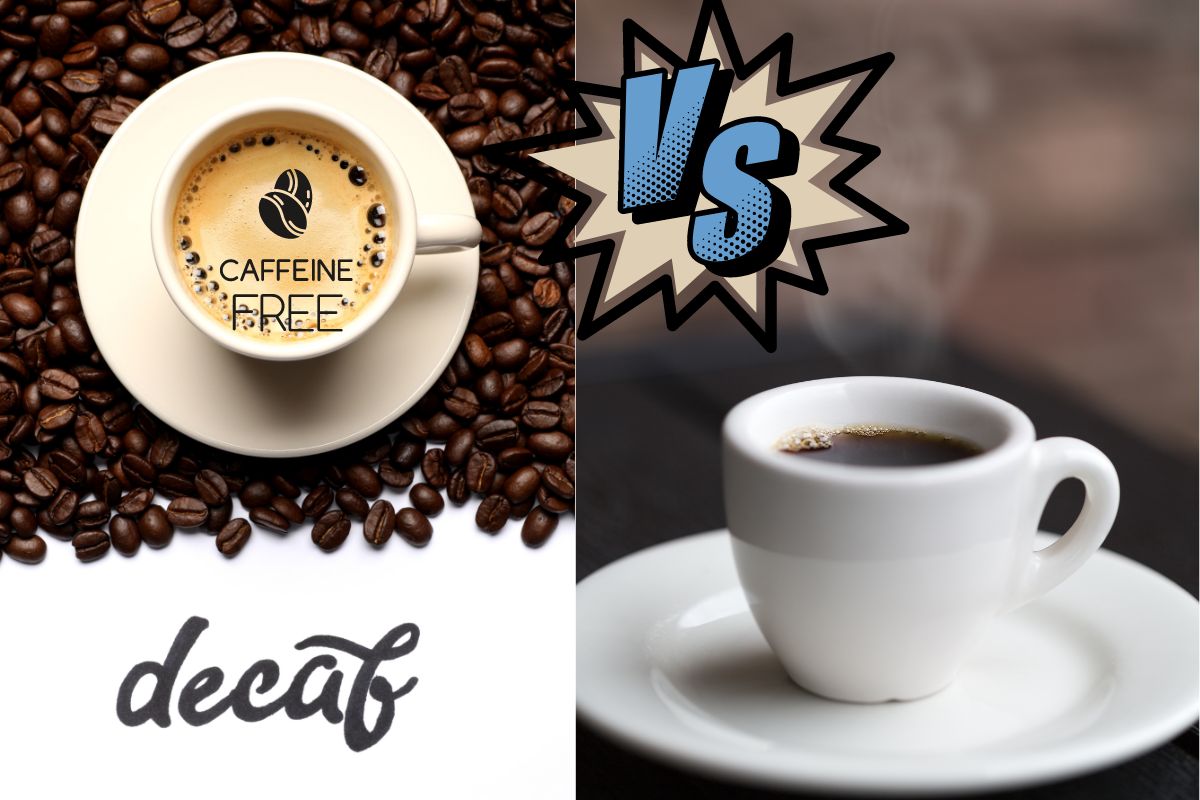Preferred by those who don't want to take too much caffeine, are we really sure that decaffeinated is the best solution? Let's find out together.

@Canva
Coffee is more than just a beverage; it’s a ritual shared with friends or colleagues, a scheduled break in our daily routine, and an essential companion when we need a boost of energy and mental focus.
However, especially as the day progresses, many people might find the need to cut back on caffeine and switch to decaffeinated coffee. But is this the best choice for everyone? The answer isn’t as straightforward as one might think.
Regular coffee vs. decaf
Caffeine is an alkaloid, a large group of natural substances that includes cocaine and nicotine (though their toxicity is not comparable to the effects of caffeine). It affects brain chemistry by quickly activating the nervous system, increasing dopamine and adrenaline levels, which raises heart rate and blood flow to muscles.
Decaffeinated coffee is made by treating coffee beans with processes that significantly reduce caffeine content. These beans are treated with chemical solutions, leaving about 10 milligrams of caffeine per cup—a small amount compared to a regular espresso but potentially bothersome for sensitive individuals.
To put it in perspective, a cup of espresso (about 2 fluid ounces) contains roughly 1/3000 of an ounce of caffeine, while a cup of American coffee (about 8 fluid ounces) contains a little bit more than 1/3000 of an ounce. These amounts are approximate and can vary based on preparation methods and the type of coffee used.
Safe caffeine limits
The European Food Safety Authority (EFSA) considers a single dose of caffeine up to 200-300 milligrams (about 0.007 to 0.01 ounces, found in about 3 cups of coffee) safe for healthy adults. However, establishing a universal safe limit is complex because the effects of caffeine can vary significantly from person to person.
Decaf coffee: pros and cons
Decaf coffee has a less stimulating effect on the nervous system and can help reduce side effects like nervousness, irritability, and palpitations. Especially when consumed in the afternoon, it has a lesser impact on sleep quality and duration.
On the downside, decaf coffee isn’t necessarily better than a good espresso due to its extraction method and pronounced acidity. One method uses methylene chloride, a solvent considered harmful to human health. According to the World Health Organization (WHO), methylene chloride evaporates during decaffeination, but some studies suggest traces remain in the final product. A more expensive and less common method uses carbon dioxide, avoiding toxic substances.
Decaf coffee is also much more acidic than espresso because it often uses Robusta beans, which are easier to decaffeinate but higher in volatile acids.
Who should avoid decaf?
Those with gastric acidity or gastrointestinal issues might find switching from espresso to decaf unsuitable. For those unwilling to give up their coffee habit, there are alternatives. Barley coffee and chicory coffee, made from the dried root powder of chicory, offer a slightly bitter taste. Matcha tea, rich in antioxidants and anti-inflammatory substances, is another option.
Cocoa can also be an excellent alternative due to its tonic and stimulating properties. However, it naturally contains caffeine, just like tea leaves and guarana berries.
